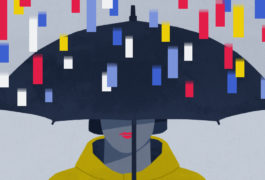Massive analysis refines map of autism’s genetic roots
The largest genetic analysis of postmortem brain tissue to date has yielded maps of when and where genes related to autism are turned on and off throughout life.

The largest genetic analysis of postmortem brain tissue to date has yielded maps of when and where genes related to autism are turned on and off throughout life.

Neurons grown from human stem cells and grafted onto the brains of live mice mature and form connections like those in the fetal human brain.

A new resource details the protein-coding portions of the genomes of 36 popular mouse strains.

The autism gene TBR1 controls the expression of several other candidate genes that govern the architecture of the brain’s outer section.

Mapping the effects of autism mutations on mouse brain circuits may reveal subtypes of the condition in people.

Watch the complete replay of Janine LaSalle discussing gene-environment interactions and autism.

Watch the complete replay of this journal club, which featured a paper exploring rare genetic variation in psychiatric conditions, including autism.

Early features of other conditions may contribute to autism itself

Watch the complete replay of Feng Zhang discussing current genome editing technologies and the future of these tools.

Some individuals who have autism mutations show no signs of the condition; understanding why may lead to treatments.